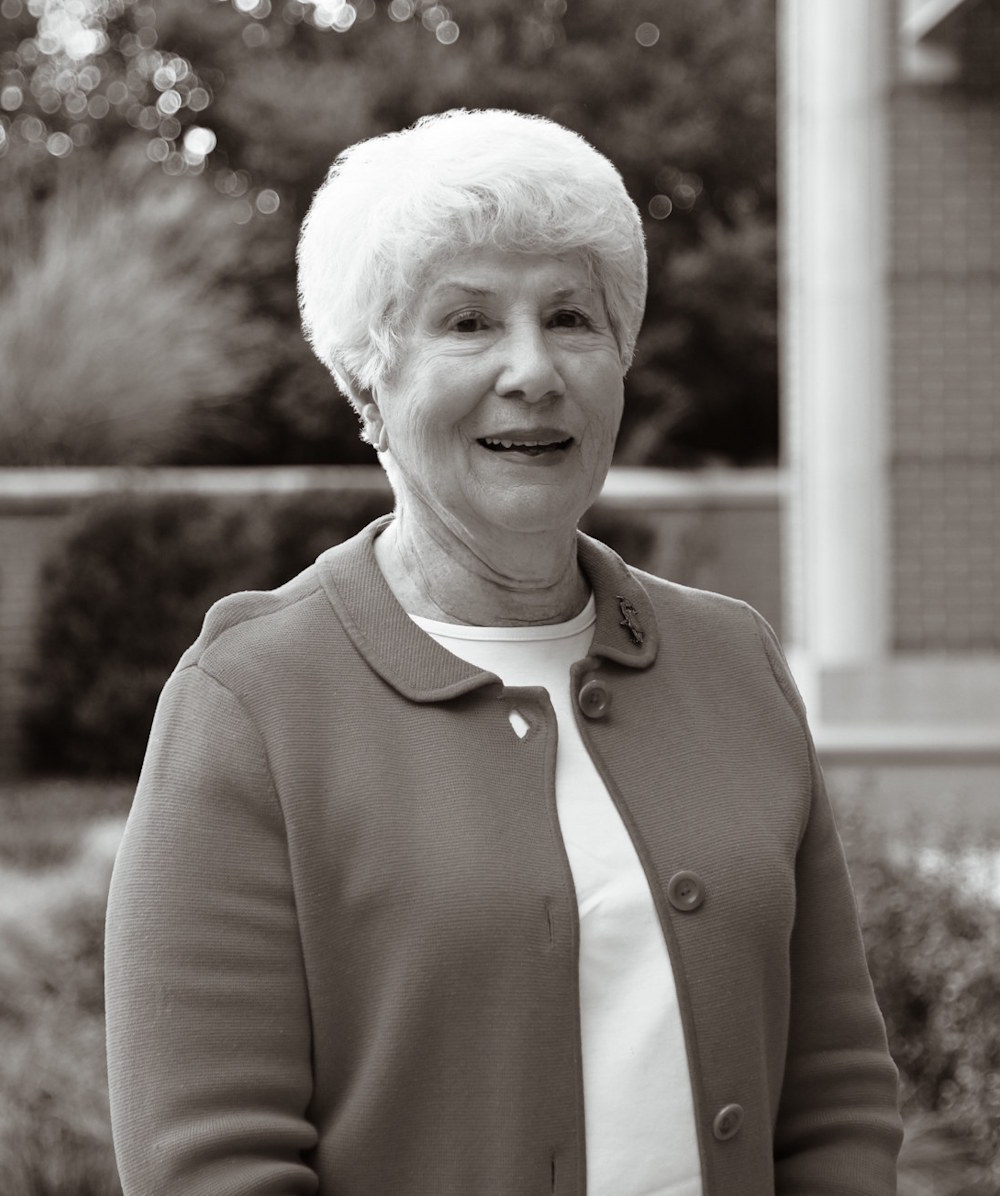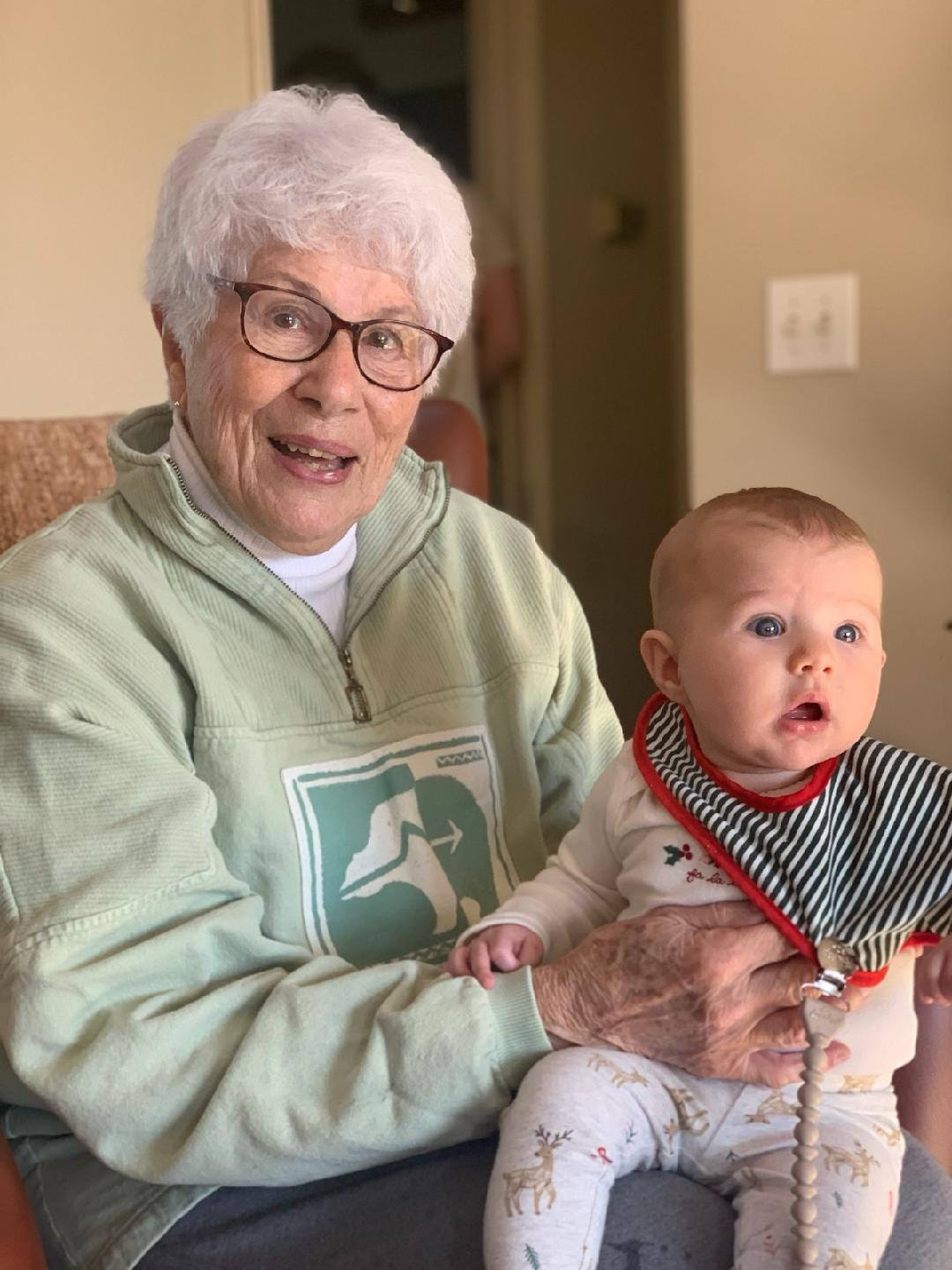
50 Careers for 50 Years
Fifty public health alumni reflect on their educational journeys and the impacts they’ve made across communities, countries, and the world.
February 20, 2025 | Erin Bluvas, bluvase@sc.edu
In her small town of Summerton, South Carolina, Lillian (Lill) Mood’s graduating class had just 13 students. She was halfway through her application to attend a hospital-based diploma program, which was the main path to becoming a nurse in 1958, when her older brother intervened, telling Mood she needed the full college experience.
“I had a limited vision of careers for girls at the time,” Mood says. “The usual options
were teacher, secretary or nurse, and I knew I would be happier in an active job.
I leaned toward a helping profession, so nursing became my choice. Providentially,
that same year USC announced they would begin a four-year baccalaureate program in
nursing.”
From the start, and throughout her career, Mood was guided by Virginia Henderson’s definition of nursing and the logical next step in seeing nurses’ roles as going beyond individual health to improve the health of communities and populations.
“Nursing uses strategies for building strength, knowledge and will – including political will – to make a difference in the health of one person and the whole community,” Mood says. “This perspective opened me to an interdisciplinary approach.”
She found a lifelong mentor in Virginia Philips, a public health nurse with the State Board of Health (which would become known as the South Carolina Department of Health and Environmental Control (DHEC) in 1973 and be renamed again as the Department of Public Health in 2024) who taught public health nursing courses in the new nursing program.
“She was the reason I went into public health,” Mood says.
After graduating with USC’s first class of nurses in 1962, Mood remained with the College of Nursing for a year as a clinical instructor in obstetrics and pediatrics. She then spent several years engaged in broad, generalized nursing practice at small community hospitals. Much of that experience took place in labor and delivery units, and she spent one memorable year at a tuberculosis hospital in North Carolina.

Upon her move back to South Carolina, Mood had three young children and the professional experience to lead. Phillips reached out to ask if she would organize and operate home health service programs for the State Board of Health in the three counties that didn’t have this service at the time.
“For my family’s sake, it sounded better than rotating shifts in a hospital setting, but it was a big endeavor,” Mood says. “I was THE home health nurse for three counties while I was also assembling all of the other services of a Home Health Agency.”
This job involved working with physicians and coordinating with Medicare to grow the program. When her husband’s work took the family to Columbia, she transferred to the State Board of Health’s central office management of Home Health Services.
It soon became evident that Mood could better impact this and other work if she had
a voice in policy and other decisions at DHEC. Phillips, who was by then the State
Director of Public Health Nursing, advised Mood she would need a graduate degree to
qualify for broader roles and participation in policy making bodies.
It was 1975, and it just so happened that USC had recruited Rolf Lynton the prior year to establish a new school of public health (it wouldn’t be named the Arnold School of Public Health until 2000) and serve as its inaugural dean. The first program of study, a Master of Public Health degree, had just seen its first graduate (Mary Ann Galloway) and was enrolling the inaugural cohort of students to begin that fall.
The focus of the new school was to strengthen the state’s public health efforts by encouraging members of the existing public health workforce to join the Master of Public Health program by coordinating funding to support their graduate degrees. Mood remembers that many of her classmates took that year off from work to attend, but she had some important projects underway at work that she did not want to leave.
“I thought I could manage the courses along with full-time work, and that combination actually made the education experience even more meaningful,” she says. “While other people searched for projects to do, I had a whole list of things I was already working on, so it was mutually beneficial to my work and education.”
The program kicked off with an intensive summer full of course work across multiple areas: environmental, health education, epidemiology, and planning/administration. The 25 or so students spent all day, every day in classes – hanging on every word of the visiting Tulane University professors who came to teach epidemiology and biostatistics.
“The epidemiology professor would present us with a case study of an outbreak and then ask us what questions we would pose – keeping it all relevant and interactive,” Mood says. “The biostatistics professor always gave us real-life applications, which was helpful for those like me who hadn’t had a math class in a decade or more!”
Another memorable course from that summer was taught by Winona Vernberg, who would lead the school as dean for 18 years following Lynton’s tenure. Vernberg presented the class with environmental issues facing the state and brought in the people working on them so they could explore solutions together. Weekly seminars led by the school’s Director of Practice, Bob Sigmon, offered a vital component of their interdisciplinary education by involving a cross-section of students discussing and problem-solving the various situations they encountered with their projects.
“They taught us that public health is a team sport and that people bring different types of knowledge, experience and expertise,” Mood says. “That approach was so embedded in all of us through this collective learning and working together.”
Public health courses were complemented by subjects from other areas at USC, such as the school of business and college of nursing. So, while the inaugural cohort benefited from a tremendous sense of community among the students and faculty, their experiences were also enhanced by experts from related fields.
“We were an energized and committed group of people,” Mood says. “The new and existing
relationships we developed in the education setting carried over to work and planted
the seed of how to take these collaborations beyond the department to national and
interagency efforts.”

As lessons and relationships transcended both campus and professional spaces, these collaborations forged partnerships that would shape the future of public health work in the state. In Mood’s realm of long-term care, she and her colleagues began thinking more broadly about how to best care for older adults and what stakeholders needed to be included in analysis and planning.
As a result, the school of public health initiated and staffed collaborative discussions among agencies, providers and legislators. It also supported the work of the Long-term Care Policy Council, which included leaders from various agencies, to develop community long-term care plans for the state’s aging population.
One of the outcomes of the council’s work was an applied research project on community long-term care in Spartanburg. Mood was asked to lead this work, which turned out to be a bridge into the second phase of her 32-year career.
As year one of the project was completed in 1978, Philips announced her retirement as the State Director for Public Health Nursing and encouraged Mood to apply for the role. The new position placed her on the commissioner’s staff and came with a seat on the executive management policy committee for the agency.
When Robert Jackson took over the commissioner role in 1979, he began reorganizing. In Mood’s new position as Assistant Commissioner for Professional Services, she continued overseeing home health care, but she also assumed responsibility for DHEC’s other professional offices, including health education, social work, nutrition and public health dentistry. She continued in this interdisciplinary role until Jackson left in 1986.
His successor, Mike Jarrett, was the first DHEC commissioner who was not a physician, and he had his own changes in mind. Jarrett asked Mood to leave her current position and report directly to him on strengthening the public health assessment and surveillance system and quality of services offered by the agency.
This invitation was made, in part, due to Mood’s involvement in the Institute of Medicine Study Committee on the Future of Public Health in 1988. The only nurse in the group, Mood shared her experiences with public health work and education in the state as part of the committee’s work.
The committee and its report represented a major milestone for public health in the nation as it was the first concerted effort to define major areas of the public health mission of assuring conditions in which people can be healthy – policy development, assessment and surveillance, and assurance of health care to populations. Mood spent several exciting years implementing the findings described in the study, working with individuals across the agency and developing new programs, such as managerial training for health and environmental science experts-turned-supervisors.
“Some of the feedback we received from staff indicated that we needed better management preparation for individuals who are great in their professional fields but who need additional skills for leadership roles,” Mood says. “Influenced by the school of public health’s interdisciplinary and relational approach to education, we implemented a train-the-trainer program where experienced supervisors co-taught management skills to mixed groups of participants from across the agency divisions and bureaus.”
Another initiative was a year-long study of what was then called telecommuting, which has since morphed into a “normal” practice for virtual work and education. A graduate student from the school of public health completed the design and analysis for the study evaluation.
When Jarrett passed away following a two-year battle with lung cancer, Tom Brown served as interim commissioner. Lewis Shaw, the head of the environmental side of DHEC and a long-time colleague of Mood’s from the Executive Management staff, approached Mood about transferring to the environmental programs. He said he thought “they needed a nurse.”
“I laughed at first, but then I realized he had a good point,” Mood recalls. “They needed someone to be the bridge between environmental scientists and engineers and the communities who were often angry and upset over environmental issues they feared were affecting their health. My background in health care assured them that I would understand their concerns. Most people know and trust nurses, and I was able to be working in and with communities – work that I loved.”
Mood spent the final third of her public health career as the Director for Risk Communication and Community Liaison for DHEC. She was the go-to person for individual and community concerns about possible environmental hazards and their effects on health, such as a leaking underground fuel tank, smoke from a nearby manufacturing plant, water that “didn’t look or smell or taste right,” or just the unknowns of a local industry.
A community might also raise concerns about “too much cancer” in their neighborhoods, which they feared might be related to water or air or waste pollution. Her working hours were spent meeting local residents where they were, whether at kitchen tables or country churches or neighborhood associations. She listened to them and let them show her what worried them, and then she pulled together staff from across the agency to make an appropriate response.
In addition, Mood participated on a sub-committee of the National Environmental Justice Advisory Committee that was established by an executive order from President Clinton and worked collaboratively with the Columbia Urban League on a three-day Future Search Conference on Environmental Justice that brought together different stakeholder groups – public health and environmental agencies, legislators and other elected officials, industries, educators, community advocates and activists – to find common ground.
The uniqueness of Mood’s newly developed role resulted in her invitation to chair a study committee for the Institute of Medicine on Nursing, Health & Environment in 1995. That study raised awareness of the interdependence of health and environment and nurses’ roles in alleviating and responding to risks in any practice setting. She became a charter member of a national organization that grew out of the findings from the study – the Alliance of Nurses for Healthy Environments.
Building on her 20+ years of cross-training experience, Mood secured one of nine spots
in the Kellogg Foundation’s inaugural fellowship program in community health and leadership
development. Applications for grants in this nationwide initiative required joint
support from a governmental health agency, community advocacy group and academic institution.
Thanks to her rich and collaborative experiences, Mood had links to all three, and
the Kellogg Fellowship offered new connections and opportunities for learning.

Despite “retiring” in 2001, Mood has remained busy with work and fun. In addition to tennis, kayaking, singing, traveling, hiking, and spending time with her family (three children, 12 grandchildren, six great-grandchildren), she is involved in numerous service organizations, such as the League of Women Voters, Central Midlands Regional Transit Authority (Governing Board), Palmetto Senior Care (Board Member), Chapin Beautification Foundation, Dutch Fork Choral Society, Chapin High School Improvement Council, and the Arnold School’s Public Health Practice Advisory Council.
She has been recognized with the United Way Community Impact, Rotary Club Paul Harris Fellow and Chapin Citizen of the Year Awards. Honors from her three-decade career are even more numerous. Along with a Fellowship in the American Academy of Nursing and roles with the American Public Health Association, South Carolina Public Health Association (including president), and many others, Mood is the recipient of the Order of the Palmetto (highest civilian honor from the governor) and the SCPHA President’s Award. A treasured USC graduate of both the College of Nursing and Arnold School of Public Health, Mood has received the Outstanding Nurse Alumna Award and the Norman J. Arnold Alumni Medal.
Though Mood’s career path appears fairly linear in hindsight, she didn’t see it as intentional or strategic while it was unfolding.
“It wasn’t like I had this plan mapped out and did some systematic progression,” she says. “My life is full of examples of being in the right place at the right time.”
This holds true for Mood all the way back to her invitation to join the very first class at the Arnold School of Public Health.
“This is an example of one of the many things in my life and career that came to me rather than me going to find it,” Mood says. “The Master of Public Health program became a gateway that opened and shaped the opportunities and perspectives that I experienced throughout my career.”

Fifty public health alumni reflect on their educational journeys and the impacts they’ve made across communities, countries, and the world.

Join us as we celebrate the school’s 50th anniversary with guest speakers, symposia, feature stories, and anniversary events for students, alumni, faculty, staff and friends.